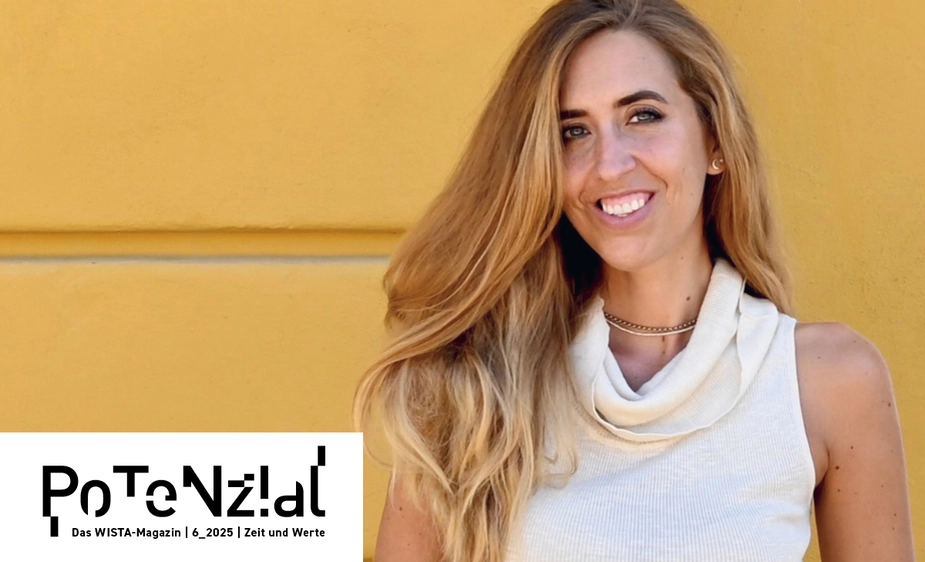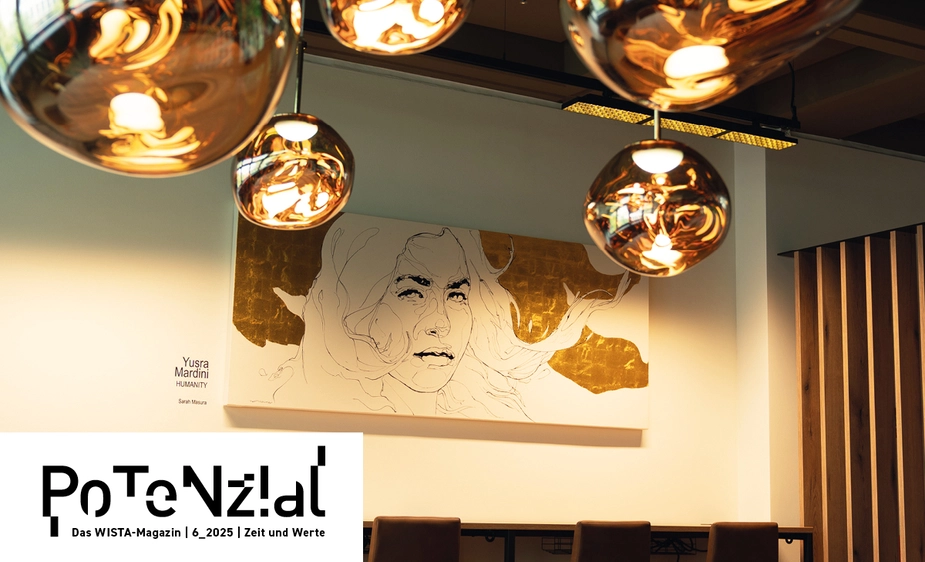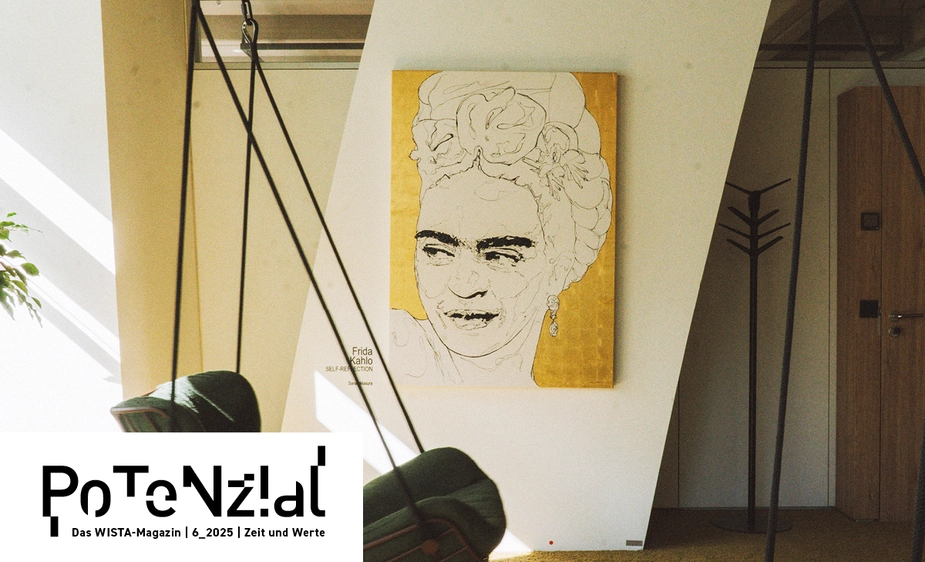Art with conviction
Core human values are made visible at the ST3AM workspaces in Adlershof and Charlottenburg
Art in offices is often little more than a meaningless splash of colour on the wall. But it can be done differently. With a clear colour concept, artist Sarah Masura and interior designer Urve Liivak joined forces to put their own stamp on the ST3AM workspaces in Adlershof and Charlottenburg. Liivak focuses on natural colours, warm lighting, and clearly structured work zones. Also rendered in natural tones, Masura’s art blends seamlessly into Liivak’s workspaces. Each room features a personality representing a core human value, giving all 21 rooms a distinct identity. The series is thus aptly titled WISTA Values.
A QR code in front of each office provides more information about the personalities. Nelson Mandela, the South African president who fought against racial segregation and discrimination, stands for equality. Philosopher Hannah Arendt stands for diversity, Socrates for discussion, the Scholl siblings—members of the resistance against the Nazis—for meaning, and scientist Ada Lovelace for curiosity.
Masura delved deeply into their biographies, finding moments of connection between light and shadow, strength and pain. “I established a bond with each of them and hope the artworks make their feelings and challenges visible and their thoughts perceptible,” she says. Because of her distinct painting technique, it was necessary to reduce the portraits to their essence, so Masura focused on the eyes. “They’re the mirror to the soul, after all. The gaze of judge Ruth Bader Ginsburg (standing for fairness) is penetrating and alert, whereas the eyes of human rights activist Malala Yousafzai reveal suffering. However, they also show the personal growth that resulted from it. Virginia Woolf’s empty, introspective gaze results from her illness.” The writer represents empathy.
To do justice to these great personalities, Masura opted for a minimalist one-shot technique, mixing black acrylic and gel into a mass and drawing threads from it to drip onto a natural-fibre canvas. “The paint needed a specific consistency. When the paint fell in large drops and behaved differently than I thought, I had to start on a new canvas,” says Masura. If the thread of paint fell only slightly differently than she intended, the artist would pause and revisit the work later.
She soon realised that imperfection was part of the process. Better a brushstroke in the wrong place than a lack of dynamism and expressiveness. For the IHK Berlin Working Spaces at Ludwig-Erhard-Haus in Charlottenburg, Masura dripped other depictions of values onto canvas, enhancing them with gold leaf. They included self-reflection in the shape of Frida Kahlo and motivation in connection with Elisabeth Selbert and Frida Nadig. Complementing these were depictions of people of different genders and skin tones. They stand for cohesion and community: You and I.
At the WISTA Values opening in early August 2025, the 30-year-old—who has a chronic pain condition—also presented her eight-part photo series Authentic Reflection, which explores her invisible disability. For it, she developed a concept of mood, light, shadow, and beige clothing intended to merge with the beige stone in the background. The focus is on making Masura’s pain visible artistically. The concept was realised in cooperation with Pia Schoening, a photographer. Various parts of Masura’s body lie in the dark, like her unseen pain.
“It is important that we talk about these uncomfortable topics to reduce barriers, foster understanding, and create perspectives for people like me and many others,” says Masura. The photos are accompanied by words in white lettering, expressing Masura’s point of view. They are thoughts that would otherwise go unheard: “How do we survive a world built for performance? I don’t fit in—not even into my own concept,” she captions a photo. “Perhaps being limited is closer to being human than we realise.”
Susanne Gietl for Potenzial


